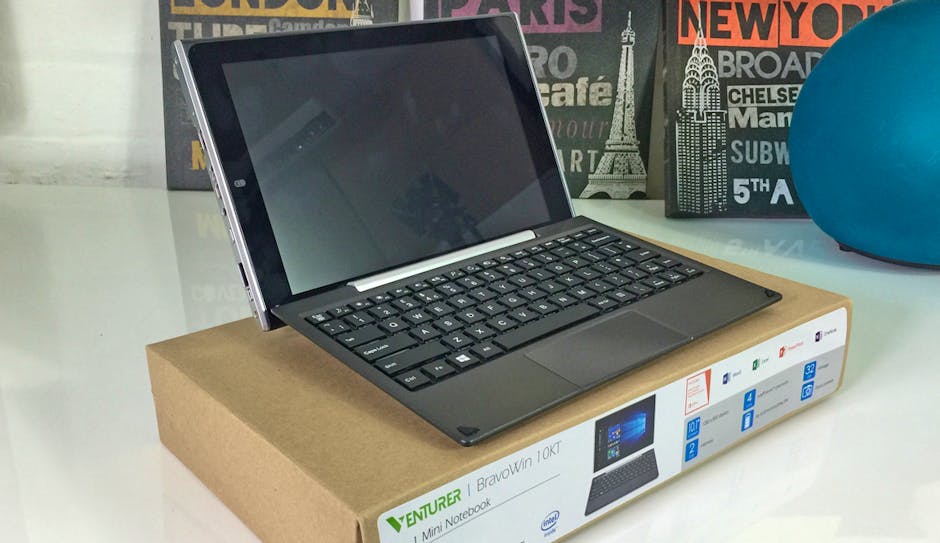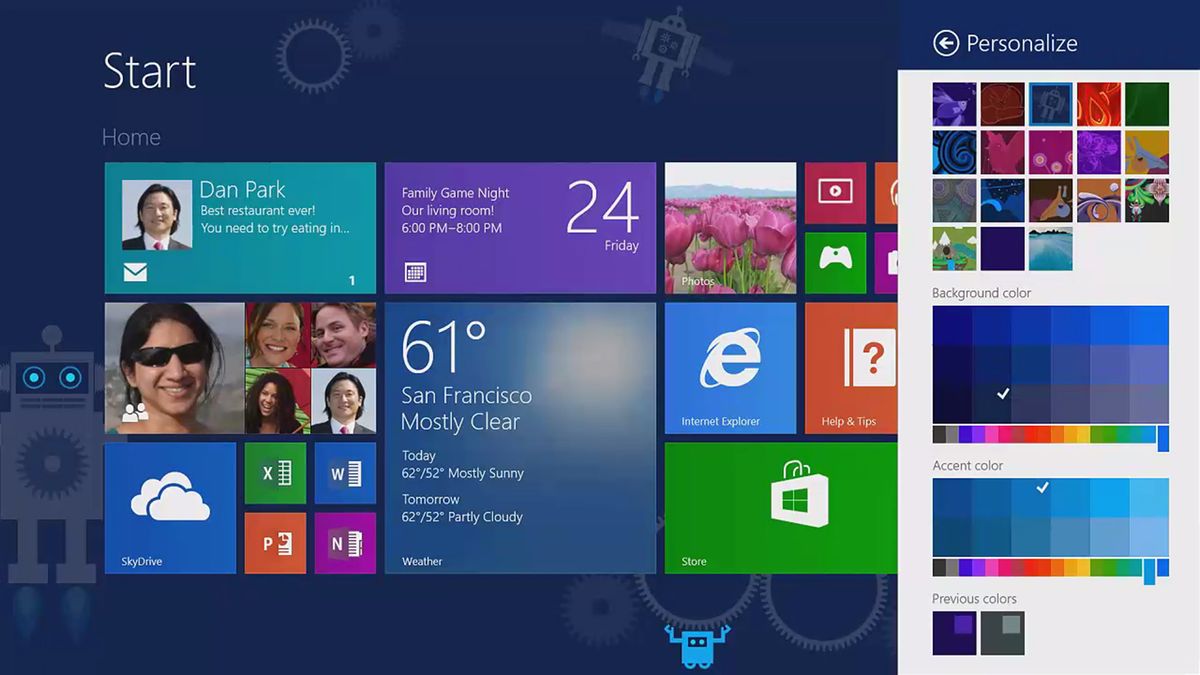The most common reason for non-business users to purchase Windows 10 Pro is for built-in remote desktop client applications and Hyper-V. These two features can be used for far more purposes than business security and operational scaling. Home use of remote desktop allows for wireless access, or streaming, of your desktop to another device. Any program installed on your PC can be used from any internet-connected screen like tablets and smartphones. In general, computers purchased from a retail store or online come pre-installed with Windows 10 Home, unless you are purchasing a newer model with Windows 11 or the product states it has 10 Pro. For most computer users, Windows 10 Home is sufficient to handle tasks.
It doesn't stop users from installing productivity software or third-party applications. Users may not even notice the difference in Windows 10 Home versus Windows 10 Pro if they never find a need for features like bit locker, remote desktop, and streamlined business accounts. The system administrators can configure these settings for computers joined to the same domain. Other experienced users can also use group policy editor to their own PCs. Furthermore, Windows 10 Pro allows virtualization through Microsoft Hyper-V. The remote desktop connection is another feature that it has.
Moreover, PCs with Pro edition can accept or host an inbound terminal server session. These are some of the extra features available in Windows 10 Pro. Pro users can get updates from Windows Update for Business, which includes options for scheduling updates so they don't reboot PCs at important business times. Hyper-V is a Windows-only hypervisor used for running virtual machines on CPUs that support virtualization.
While Hyper-V is included with your Windows 10 Pro license, it needs to be downloaded and installed separately. New releases of Windows 10, called feature updates, are released twice a year as a free update for existing Windows 10 users. Each feature update contains new features and other changes to the operating system. The pace at which a system receives feature updates is dependent on the release branch from which the system downloads its updates. Windows 10 Pro, Enterprise and Education could optionally use a branch, which is defunct since version 1903, that received updates at a slower pace. These modes could be managed through system settings, Windows Server Update Services , Windows Update for Business, Group Policy or through mobile device management systems such as Microsoft Intune.
These are the core differences in Windows 11 Home vs Pro editions. As we've mentioned, most of them revolve around features meant for business users. Some are designed to protect especially sensitive information, while others have to do with quickly setting up devices for users and managing them remotely. For the average person walking into a store, you're probably going to be just fine with Windows 11 Home. The odds are if you need Windows 11 Pro, you already know you need it and why. Another difference that will be noticeable for business users is that Windows 11 Home PCs can't be joined to Active Directory.
Active Directory solutions are necessary for managing business devices, such as configuring access to certain resources, deploying apps, and so on. Those are all professional tools, so they don't make sense for most Windows 11 Home users. Windows 10 Pro comes with BitLocker that also offers full device encryption to protect your data from unauthorized access, but with extra management tools. Hyper-V is a hypervisor that allows users to run virtual machines with any version of Windows or Linux alongside Windows 10. And Trusted Boot is another feature included with Windows 10 Pro that works with Secure Boot to protect the boot process from any kind of malare.
If you need to set up a kiosk device, this edition has a feature to lock the device to use it with a single application. You can also access the Group Policy Editor to manage advanced system settings. Also, if you need to access apps and files remotely, Windows 10 Pro comes with Remote Desktop to connect remotely within the network or across the internet.
The professional version of Windows 10 includes many extra features designed for businesses. It has virtually everything offered by Windows Home, plus additional security and management services. This version of Windows 10 is typically purchased in bulk by companies or schools, though you can configure desktops and laptops to include it versus using Home. If you're concerned about security and want to protect your data from intruders, or you're coming from MacOS and want something comparable to Apple's Filevault, you'll want to spend the extra money on Pro. Bitlocker provides full disk encryption so you can keep your data safe from hackers.
The latest iteration of Bitlocker also allows for the encryption of individual files for more flexibility than the all-or-nothing approach of previous versions. Again, other software can accomplish similar encryption, but it's not built into the OS. Be sure to get an SSD that supports the necessary hardware acceleration for Bitlocker if you don't want to lose performance. Windows 11 Pro has everything the Home version has, while also adding a few additional features, mostly serving professional environments. One of the most notable ones is BitLocker, which is a full volume encryption tool that can encrypt your drive volume using 128-bit or 256-bit AES encryption and your computer's TPM.
Home and Pro are two editions of Windows 10 Operating system. The difference between Windows 10 Home and Pro is that the Microsoft designed Home mainly for regular users while Pro for businesses. The ProfessionalEdition of windows 10, as you may have guessed, includes many extra features designed for businesses.
It has basically everything offered by Windows Home, plus extra security and management services. This version of windows 10 is typically purchased in bulk by companies or schools, although sole proprietors and freelancers may also be interested in buying it. Homeis the standard version of windows 10, the baseline package considered for the individual user primarily using windows at home or for take-home schoolwork.
This version contains all the features that Microsoft aims at the wide consumer market, such as the Cortana Voice Assistant(Like Apple's SIRI), Outlook, One note, and Microsoft Edge. Home is still compatible with the windows insider program, but it does limit the security and group management services that other versions of windows have access to. Aside from the aforementioned features, there are several other distinctions between the two versions of Windows.
The maximum amount of RAM supported by Windows 10 Home is 128GB, whereas Pro supports up to 2TB RAM. However, unless you're running a large number of virtual machines, you won't reach the memory limitations of Home for some time. Windows 10 Pro includes access to business versions of Microsoft services, including Windows Store for Business, Windows Update for Business, Enterprise Mode browser options, and more. These versions include extra features to buy and upload content in bulk. Options for virtualization include Remote Desktop compatibility, Client Hyper-V, Shared PC configuration, Azure Active Directory, and more.
The Home version will suffice for majority of the individuals using Windows at home. The Pro focuses entirely on security and compatibility, and ease of use. Windows 10 Home and Pro share some business features as well. Both the Windows versions come with support for Microsoft Passport, device encryption, side-loading of business apps, and mobile device management.
Along with that, both versions can be easily upgraded to Windows 10 Education Edition. Microsoft has offered Pro versions of their OS since Windows XP. Similar to every other Pro model, the Windows 10 version is designed with business professionals in mind. It includes the core Windows 10 Home OS, but with a handful of additional security, productivity, and business management features. This edition was introduced in July 2016 for hardware partners on new devices purchased with the discounted K–12 academic license. It also features a "Set Up School PCs" app that allows provisioning of settings using a USB flash drive, and does not include Cortana, Microsoft Store suggestions, Windows Sandbox, or Windows Spotlight.
Of course, the bulk of the differences between Home and Pro editions of Windows 11 are for businesses. Most device management capabilities aren't available in Windows 11 Home at all. Windows 11 Pro, however, supports things like Group Policy, which lets IT admins configure certain policies for groups of devices in one go. There's also Windows Update for Business, which lets companies control how updates are rolled out to their users to avoid unexpected issues. As business users often deal with especially sensitive information, there are also some extra security features in Windows 11 Pro. This feature encrypts data stored on your hard drive so no one else can access it.
Even if your computer is stolen, your files are protected from users other than yourself. Hyper-V is a virtualization tool built into Windows, which means you can create virtual machines with it. If you want to try a different operating system, or use an older version of Windows for some reason, you can do it using Hyper-V. Virtual machines don't make changes to your host PC, so you can do it all risk-free.
Again, there are third-party apps such as VMware Workstation Player that let you do this on Home editions. As you may know, every major version of Windows comes in a few different editions. The same applies to Windows 11, which has mostly the same editions as Windows 10 aside from the upcoming Windows 11 SE for education. For most people though, it's going to come down to Home and Pro.
These are the two editions you'll be able to find in stores or pre-installed on computers. If you're looking for a comparison of Windows 11 Home vs Windows 11 Pro, we've rounded up all the major differences here. Businesses that require managing a lot of mobile devices and computers will find the features of Windows 10 Pro save a lot of headaches. Home users who wish to take advantage of built-in remote desktop features without using third-party solutions will also want to purchase Windows 10 Pro. For small businesses, it is almost always worth upgrading to 10 Pro.
Microsoft has offered a Pro version of Windows since the XP days, bringing with it additional features for power users that Home doesn't offer. Here's a breakdown of the most useful features that you get with Windows 10 Pro, as well as free alternatives, when applicable. Considering that businesses are usually targeted by cybercriminals, Pro offers more robust security than Home.
It has Windows Defender Antivirus software, Windows Hello biometric logins that use face or fingerprint authentication, and rudimentary device encryption to minimize data breaches. Those with multiple Windows devices will also love the mobile device management app, which allows them to track and control app usage for connected smartphones and tablets. Through the above instruction, you know the extra features in Windows 10 Pro are really designed for businesses. The benefits of the Pro version focus on security and compatibility.
However, the value of these features will come down to whether you actually need them or not. If most of these features are meaningless to you, that's no surprise. Windows 10 Home features can suffice for the vast majority of users.
If you just want to browse the web, do a little work, and manage their media files, it's already quite good. Office 2013 looks better than office 2010 and includes new convenience features with a minimal learning curve for existing users. The reasoning is that RDP is meant to assist business professionals who find themselves working remotely from time to time. It creates a secure connection between work and home computers that allows the user to access files, programs, and other sensitive material. This isn't a particularly useful feature for those just looking to game, and there are plenty of free or low-cost options available with similar functionality if you need it. The "Media Feature Pack" can be installed to restore these features.
The variation cannot be changed without a clean install, and keys for one variation will not work on other variations. Some of the features that are only available in Windows 10 Pro include joining a domain, BitLocker, remote desktop, creating virtual machines, and more. If you need any of these features, then upgrading to Windows 10 Pro is a no-brainer. However, if you're a home user who doesn't need these features, then Windows 10 Home is the better option.
Keep in mind that there is no downside to upgrading from Windows 10 Home to Windows 10 Pro, so if you're not sure which version of Windows 10 is right for you, go with Windows 10 Pro. Windows 10 Home doesn't include these features, but it's still a capable operating system with plenty of flexibility. It's great for home users who don't need the extra security or management features offered by Windows 10 Pro. If you're not sure which version is right for you, it's probably best to stick with Windows 10 Home and upgrade if you need more features later on.
Is Windows 10 Pro More Stable Than Home Windows 10 Pro and Windows 10 Home are effectively the same things. However, Windows 10 Home has advanced features locked as 10 Pro features like built-in remote desktop and BitLocker security. Windows 10 Pro advanced features are geared mainly for businesses. Both 10 Home and 10 Pro have the same consumer features like Xbox game pass streaming. Several features in Windows 10 Professional are aimed squarely at the business market.
Domain join, for example, allows you to bring in your own PC and connect it to the office domain. Group policy management allows an IT admin to control which PCs do what. Likewise, if your business needs specialized enterprise apps, an admin can lock down the Windows Store to make sure employees get those, and nothing else.
There's also the ability to join Azure Active Directory, with single sign-on capabilities. The main difference between Windows 10 Home and Pro is that Windows 10 Home is designed for regular users while Windows 10 Pro is designed to support business environments. It has advanced features such as BitLocker, Group policy management, Hyper-V, etc. and more security features.
Windows 10 Pro includes access to business versions of Microsoft Services, including Windows Store for business, Windows Update for Business, Enterprise Mode Browser options, and more. Options like Virtualization is what Pro version making unique with Home version, including Remote Desktop Compatibility, Client Hyper-V, shared PC configuration and more are also on hand. But for everyone else, especially those who simply need an OS for gaming, it's just a bunch of unnecessary features packaged within the ability to handle additional RAM that you'll never use. Microsoft has said the new OS will include performance improvements, including faster logins with Windows Hello, faster web browsing and faster wake from sleep mode. Windows Hello is a biometrics-based technology that lets Windows 10 users authenticate secure access to their devices, apps and networks with iris scans, facial recognition or fingerprints.
Windows GroupPolicy feature only limited to pro users only that allows administrators to limit what users can do using a centralized set of roles. This includes security elements like password complexity, whether they can access network resources, or install applications. Windows 10 Pro was released on the same day as Windows 10 Home. It was meant to be a more expensive version of the software that can handle advanced tasks commonly used for small businesses and big businesses. 10 Pro has security features like Bitlocker, Windows Information Protection , and Hyper-V virtualization for running applications in a secure sandbox environment. Retail versions cost $119 for a Windows 10 Home license or $199 if you go with the Pro version—OEM keys that are bought with a hardware purchase cost $109 and $149.



















































